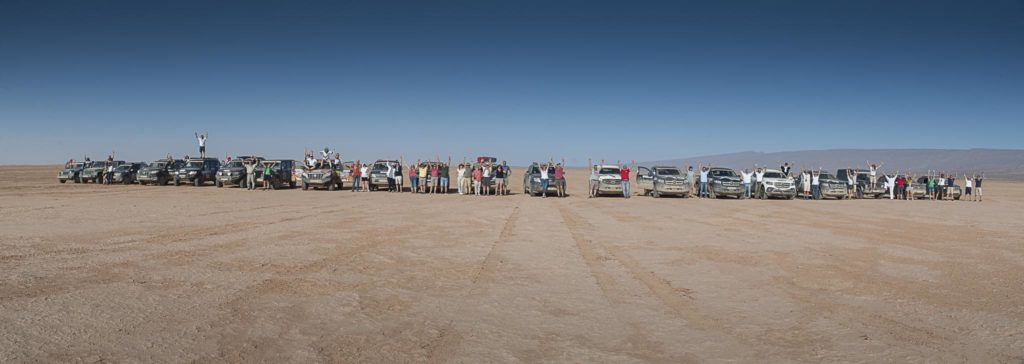Exploring Draa Valley: A Travel Guide
The Draa Valley, which is located in southern Morocco, is a stunning mosaic of lush palm trees, historic kasbahs, and meandering riverbeds bordered by arid desert landscape. The Draa Valley, widely recognized for its breathtaking scenery and abundant cultural legacy, provides tourists with an intimate glimpse into the customs and lifestyle of the Berber people who have lived in this area for many years.
Adventurers and cultural vultures alike are drawn to the Draa Valley, which offers activities ranging from touring ancient mud-brick settlements to trekking on camels through the vast dunes of the Sahara Desert.The Draa Valley guarantees an amazing experience whether you choose to explore its busy souks, indulge in the flavors of real Moroccan food, or just relax and take in the peace of its picturesque surroundings.

Draa Valley: A Gem of Morocco
The Draa Valley is a stunning oasis located in southern Morocco, renowned for its breathtaking scenery, rich history, and vibrant culture. Stretching for about 100 kilometers (62 miles) between the Atlas Mountains and the Sahara Desert, the Draa Valley is one of the longest valleys in Morocco.
The valley is characterized by lush palm groves, fertile oases, traditional mud-brick kasbahs (fortresses), and ancient ksar (fortified villages). It has been inhabited for centuries by Berber tribes who have built a distinctive way of life around agriculture, trade, and hospitality.
One of the highlights of the Draa Valley is its traditional mud-brick villages, such as Agdz, Tamegroute,Tissergat, and Zagora, which offer visitors a glimpse into the traditional Berber way of life. The valley is also famous for its ancient kasbahs, including Kasbah Tamnougalt and Kasbah Oulad Othmane, which are architectural marvels and provide insight into the region’s history.
Tourists visiting the Draa Valley can enjoy activities such as camel trekking, hiking, and exploring the local markets known for their handicrafts, carpets, and spices. Additionally, the valley is a popular destination for eco-tourism, with opportunities to stay in traditional guesthouses and experience Berber hospitality firsthand.
Overall, the Draa Valley is a captivating destination that offers a unique blend of natural beauty, cultural heritage, and authentic experiences for travelers seeking to explore the enchanting landscapes of Morocco.

FAQ about visiting the Draa Valley
Where is the Draa Valley located?
- The Draa Valley is situated in southeastern Morocco, starting around the town of Ouarzazate and extending to the edge of the Sahara Desert.
What is special about the Draa Valley?
- The Draa Valley is renowned for its stunning oases, palm groves, ancient kasbahs (fortresses), and traditional Berber villages. It offers a glimpse into traditional Moroccan culture and architecture, with breathtaking landscapes.
When is the best time to visit the Draa Valley?
- The best time to visit is during the spring (March to May) and autumn (September to November) when temperatures are milder and the landscapes are lush and green. Summers can be scorching hot, while winters can get chilly, especially at night.
How do I get to the Draa Valley?
- You can fly into Marrakech or Ouarzazate and then travel by bus, car, or guided tour to reach the Draa Valley. The journey from Marrakech to the Draa Valley takes around 6-7 hours by road.
What are the main attractions in the Draa Valley?
- Key attractions include:
- Zagora: Known for its bustling souk (market) and the famous sign “Tombouctou 52 days,” marking the distance to Timbuktu.
- Tamnougalt Kasbah: A well-preserved fortress showcasing traditional Moroccan architecture.
- Tamegroute: Home to ancient libraries, pottery workshops, and the famous Green Pottery Cooperative.
- Agdz: A historic town with picturesque views of palm groves and traditional kasbahs.
- Draa River: Offering opportunities for scenic boat rides and picnics along its banks.
- Key attractions include:
What activities can I do in the Draa Valley?
- Visitors can enjoy:
- Camel trekking through the desert.
- Hiking or guided walks through the palm groves and gorges.
- Exploring ancient kasbahs and fortified villages.
- Visiting local markets and experiencing traditional Berber culture.
- Stargazing in the clear desert skies.
- Visitors can enjoy:
What should I pack for a trip to the Draa Valley?
- Essentials include:
- Sunscreen, sunglasses, and a hat to protect against the sun.
- Comfortable walking shoes for exploring.
- Light, breathable clothing suitable for warm temperatures.
- A refillable water bottle to stay hydrated.
- A camera to capture the stunning landscapes and architecture.
- Essentials include:
Is it safe to travel to the Draa Valley?
- Generally, the Draa Valley is considered safe for tourists. However, it’s always wise to take standard precautions, such as safeguarding your belongings and staying informed about any local advisories or travel restrictions.
What are some local delicacies I should try in the Draa Valley?
- Don’t miss the opportunity to taste:
- Tagine: A traditional Moroccan stew cooked in a clay pot with various meats, vegetables, and spices.
- Couscous: A staple dish made from steamed semolina grains, typically served with vegetables and meat.
- Dates: The Draa Valley is famous for its sweet and succulent dates, which are a popular local snack.
- Don’t miss the opportunity to taste:
Are there accommodations available in the Draa Valley?
- Yes, there are various accommodation options ranging from luxury resorts to traditional riads (guesthouses) and desert camps. It’s advisable to book accommodations in advance, especially during peak tourist seasons.